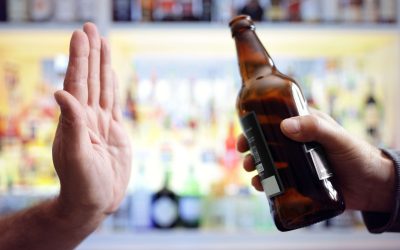Examples of withdrawal symptoms include hand tremors, gastrointestinal issues, depression, and anxiety. Your options now involve continuing to use, talking with your doctor to change your medication, or choosing an addiction treatment program. Unlike tolerance, which focuses on how much of the substance you need to feel its effect, physical dependence happens when your body starts to rely on the drug. If you were to suddenly stop using it, you would likely experience some harsh symptoms.
Cleanbreak Recovery
Physiological dependence relates to the body’s physical need for alcohol, while psychological dependence refers to the mental cravings and emotional attachment to alcohol. The term ‘alcohol dependence’ has replaced ‘alcoholism’ as a term in order that individuals do not internalize the idea of cure and disease, but can approach alcohol as a chemical they may depend upon to cope with outside pressures. These neuroadaptive changes extend beyond the reward pathways, affecting neural circuits involved in decision-making, impulse control, and stress response.
- Alcohol, despite its legal status, can lead to severe physiological dependence when consumed excessively over time.
- This means that someone not only feels as though they need drugs or alcohol to function but experiences a physical need for the substance, too.
- Long-term alcohol use can lead to severe withdrawal symptoms, including potentially life-threatening delirium tremens.
- You may struggle with maintaining healthy relationships with friends or family, and personality changes may occur.
- Research indicates that heavy drinkers face a 3.3 times higher risk of experiencing cognitive decline compared to moderate drinkers or abstainers.
What are Co-Occurring Disorders
- Speak with your doctor if you have become physically dependent on a medication or other substance.
- The liver metabolizes alcohol, and excessive consumption over time can lead to conditions such as fatty liver, alcoholic hepatitis, fibrosis, and cirrhosis.
- Addiction is considered “highly treatable.” But it can take a few tries for the therapy to be fully effective.
Recognizing this distinction is important for individuals in recovery, families providing support, and clinicians developing treatment plans. Alcohol physical addiction is caused by a combination of genetic, social, and environmental factors. These include an individual’s genetic predisposition to addiction, the amount and frequency of alcohol use, a family history of addiction, social pressures to drink, and an individual’s environment. Additionally, alcohol physical addiction can be caused by psychological factors such as depression, anxiety, or stress. Physically, excessive alcohol use can lead to organ damage, including liver disease. It can also lead to an increased risk of certain cancers, including breast and colon cancer.
What are the Causes of Physiological Dependence on Alcohol?

It also affects the body’s ability to metabolize food, leading to an impaired sense of balance and coordination. When these medications are taken over an extended period, the body may adapt to their presence. Also, the alternative viewpoint that “addiction is a choice” is also incorrect because people with substance use disorders are motivated by many physical processes that affect their behavior in a number of ways. Substance use disorder (the medical term for drug addiction) involves psychological aspects and changes to the body’s processes. Your brain will respond differently to regular stimuli due to its altered state. Because physiological dependence is a warning sign, you’ll need to know how to spot it.
If you find yourself battling with alcohol cravings, and often giving into these cravings by picking up a drink, you may be well on your way to developing a physical dependency on alcohol. The more you drink, the more your body gets used to processing alcohol and functioning with alcohol in https://clubostrich.com/self-harm-relapse-signs-triggers-and-recovery-tips/ your system, and the more alcohol you’ll have to consume to feel drunk. You may have felt the effects of alcohol after 1-2 drinks in the past, but now find yourself needing 4-5 drinks just to get a buzz. Repeated exposure to these elevated dopamine levels causes the brain to undergo neuroadaptation, leading to significant changes in its structure and function. The brain responds by reducing its natural dopamine production and decreasing the sensitivity of its dopamine receptors.
Substance Abuse Programs

If you think you are experiencing physiological and psychological dependence or are unsure if you are, reach out to us today. Our team of compassionate and skilled professionals can answer any and all of alcoholism treatment your questions so that you can feel fully prepared as you learn about your treatment options. Cleanbreak Recovery offers a holistic approach to overcoming substance abuse and addiction and support for lasting Recovery. Join us for evidence-based guidelines, expert tips, and resources for a new life. These therapeutic modalities can be further enhanced by professional addiction counseling, which empowers individuals on their path to recovery by providing them with essential tools and strategies. These adaptations create a cycle where you need increasing amounts of alcohol to achieve the same effects.
- For a formal diagnosis, clinicians refer to the Diagnostic and Statistical Manual of Mental Disorders (DSM-5).
- Understanding physiological addiction requires us to look at the bigger picture.
- Withdrawal occurs when the substance is not available, leading to a range of uncomfortable or even dangerous symptoms.
- In some cases, medication may be prescribed to manage withdrawal symptoms and reduce cravings, making it easier to avoid relapse.
- Alcohol tolerance happens when you need to drink increasing amounts of alcohol over time to achieve the effects you used to with smaller amounts of alcohol.
When addictive substances are introduced, they trigger an unnatural surge of dopamine, intensely reinforcing the drug-taking behavior. Understanding alcohol addiction’s physiological and mental effects illuminates the critical need for comprehensive treatment approaches. The intricate interplay between brain chemistry, physical health, and psychological well-being demands specialized care and support. Treatment effectiveness increases when programs adapt to individual needs and circumstances. Personalized approaches consider factors like co-occurring mental health conditions, personal history, and specific recovery goals.
St. Mary’s Hospital Medical Center
Activation of the HPA axis and CRF-related brain stress circuitry resulting from alcohol dependence likely contributes to amplified motivation to drink. Similarly, systemic administration of antagonists that selectively act at the CRF1 receptor also reduced upregulated drinking in dependent mice (Chu et al. 2007) and rats (Funk et al. 2007; Gehlert et al. 2007). This new focus is clinically relevant because these symptoms (e.g., anxiety, negative affect, and altered reward set point) may serve as potent instigators driving motivation to drink (Koob and Le Moal 2008). Sensitization resulting from repeated withdrawal cycles and leading to both more severe and more persistent symptoms therefore may constitute a significant motivational factor that underlies increased risk for relapse (Becker 1998, 1999).
If you are taking a prescription medication, your doctor may change the class of medication, which may affect your body in a different way. If it is not a prescription medication, your doctor may be able to help you reduce your use of the substance with the least side effects. Stress, trauma, peer pressure – these external forces can push someone towards physiological dependence on alcohol substance use as a coping mechanism.
Our Iowa-based detox and inpatient programs provide comprehensive care tailored to support your physical and mental well-being, helping you build a life free from addiction with a clear path to recovery. At-Risk Stage – Known as the pre-alcoholic stage, this is when you choose to drink socially or at home. You may use alcohol to feel better after a long day, to relieve stress, or to cope with certain emotions and stressors; you may also be drinking more than intended. Lastly, you may start to develop a tolerance for alcohol but may not notice it yet. This means limiting yourself to one drink per day for women and two drinks per day for men.
